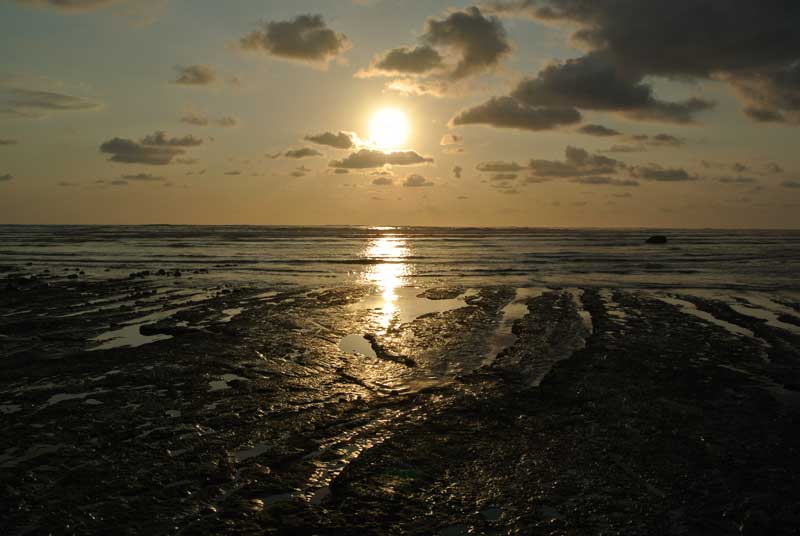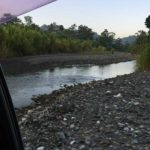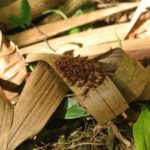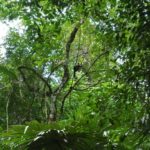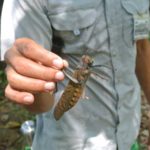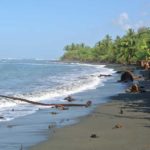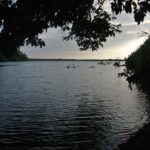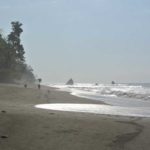- Easy way in during the dry season in Februrary
- Bugs
- Can you see the monkey?
- Giant Grasshopper
Corcovado National Park is located in south west Costa Rica on Osa Peninsula. There are 2 ways to get there from San Jose, by plane (45 minutes ) or by bus (7 hours ). It is supposed to be one of the best NP in Costa Rica.
There are lots of outdated information about Corcovado NP by google search. The most up to date information as of 2016 Februrary is that all visitors must be accompanied by at least 1 guide. Hiking from San Pedrillo to Sirena is not permitted, and therefore no tours take that route. The daily cap on the number of visitors permitted into the Sirena is 35, but they are currently building a restaurant at Sirena station that can host 70+ people, in addition to a new showering facility.
I used an agency called Surcostour. The guide assigned to my tour was knowledgeable and enthusiastic. Based on my observation, not all guides are the same. Some know more than the others, and they have different specialties. My guide happened to have grown up in a hunting and guiding family, so he was very good at tracking ground animals. Other guides could be better for bird watching, if you are looking for someone to carry a tripod and spotting scope all day long for you. Therefore, it may not be a bad idea to ask the agency ahead of time and let them know your interest.
I did the 3-day trip offered by Surcostour. Day 1 started at Los Patos and ended at Sirena. The first 8km or so was a climb over the hills separating the west coast from the east coast, but the rest of the 10km plus was the most unchallenged terrain one could walk through, that could easily be a highway for ATVs. That part of the forest is only 50 years old and it used to be occupied by farmlands until the government kicked everyone out to establish the park. Even though it is a relatively young rain forest, it is still a very noisy forest crowded out by monkeys and birds. If you are not familiar with the noises of different types of animals and birds, a guide would definitely be a great asset there ( if he/she knows his/her stuff). There were not many ground animals when we were there, but we were able to spot all types of Costa Rican monkeys and Toucans. Toucans were actually quite hard to spot because they were pretty high up in the treetops, and their bright beaks blended in with the leaves very well.
Day 2 was spent walking around Sirena. We got up at 4am in the morning to look for Picas and Tapirs. I guess our guide knew very well where the Tapir hanged out so it was almost effortless to find it sitting at the usual spot. We then headed to the area close to the beach and started tracking down the cougars. By this time, we started running into hordes of day trippers landed by boats. By around 11am, we were back to camp because it was simply too hot. The day trippers were being herded on the trail during the hottest time in the day, while we were chilling out on the camp deck. We vegged out til 2pm and then headed to the river for a swim. On the way in, our awesome guide tracked down a Pica family ( wild pigs ) and we were able to get pretty close to them.
Day 3 was the day out and it started early in the morning. We hiked the trail that ran along side the beach to La Leona. We finally caught up with the two residential cougars on the way. These cats didn’t even care about people anymore because they probably saw tourists daily. After the cougars, it was pretty much a 15km walk on the wild beach along the raging pacific ocean. If you hang out on the beach at the right time, that’s where the sea turtles lay eggs. Since only 35 people were allowed in each day, the number of people on the beach was very limited. The walk was glorious but the humidity from the sea and the rising tropical heat made me realize why they shut down the route from San Pedrillo to Sirena. There was a great temptation to go swimming and take frequent breaks early in the hike, but we held out until arriving just outside of La Leona.
My final thoughts: Visiting Corcovado NP is not like visiting any NPs in North America or Europe. Once in the park, you are not allowed to go anywhere unless you are accompanied by a guide. If you think you can wander off to explore places on your own, Corcovado NP is not for you. Think of visiting Corcovado as a “tour” of a giant zoo, instead of a typical national park backpacking experience. As a result, this NP attracts more tourists than real backpackers – as evident by the number of people paying 25 USD for a meal at the cafeteria. The park makes it a point they want you to pay through your nose so they don’t allow cooking. You can avoid the tax by bringing in dehydrated food and borrowing an electric water kettle off someone, but I wonder if they will eventually ban electric kettles once they start seeing more people trying to get around the system.
Money-wise, you need to budget about 260 USD for the guide and permit, 50 to 100 USD for transportation to and away from the NP. Meals will cost you 50 USD a day if you elect to eat at the station’s cafeteria. So at the very minimum it costs 300 USD to be there. If your goal is to see a few monkeys, it is probably not worth it. Monkeys are everywhere in Costa Rica. On the other hand, only a limited number of people are allowed in, so there is some sort of guarantee it won’t be overcrowded, until the time they jack the number of visitors up once they finish building the new facilities.

